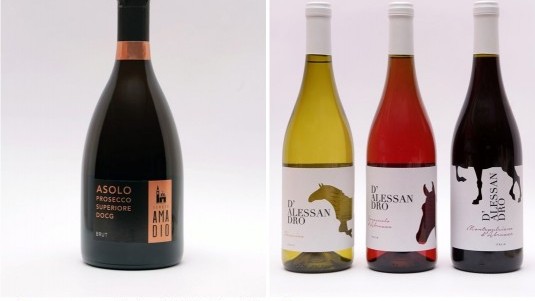The importace of labels

Have you ever stopped to consider how important wine labels are? Labels, after all, are similar to the ‘look’ a person seeks to convey. A lovely label does not necessarily denote a good wine, just as a good looking person is not necessarily engaging, intelligent or honest. But our first impressions, like it or not, are based on ‘looks’.
It is for this reason that wine labels are more important than one may think. They are a bottle’s calling card, visual identity and, especially in today’s society based on high-speed communication, no producer should underestimate a label’s importance. Wine today is more than ever and emotional product. We all know that a wine seems better if one has been where it was made, seen the land that produced its grapes and met and interacted with those who were responsible, literally and emotionally, for its transformation.
But if one has not had the possibility to visit the place a wine was made or who wants to try something new, the way to make an emotional connect with a bottle is through the visual impact created by the label and, secondly, its overall packaging, from the shape of the bottle (often determined by production regulations or tradition) to the color of the capsule. But there is no doubt that it is the label, more than the wine itself, which makes the first impression.
Italy is ahead of other countries in regard to recognizing the importance of label esthetics, also because it produces more wines. Italian graphic designers often relate a message through the label that goes beyond a simple explanation of the bottle’s contents for the consumer. While in France they continue to propose the same label (emphasizing tradition and rank), in Italy labels go a step further and create small modern masterpieces. Although these are still too few, the average level of labels has improved in terms of bringing together innovation and tradition and creating an international message, as pointed out by designer Cleto Munari, the head of the jury at the just-concluded XX International Packaging Competition organized by Vinitaly-Veronafiere.
According to jury members, a label must immediately relate what wine it is and who the producer is, tell the truth and relate the connection a wine has with the land it comes from. This is no easy task considering it also has to inspire emotion, make a first impression on the brain. “It would be nice to see more courage,” Munari said in his conclusions, “on the part of producers and see them be more daring with new, fun and even farfetched label proposals”. His suggestion appears to court younger consumers, in particular the American ‘Millennials’ who are more easily seduced by engaging and perhaps even extravagant bottle labels.

 Italiano
Italiano








